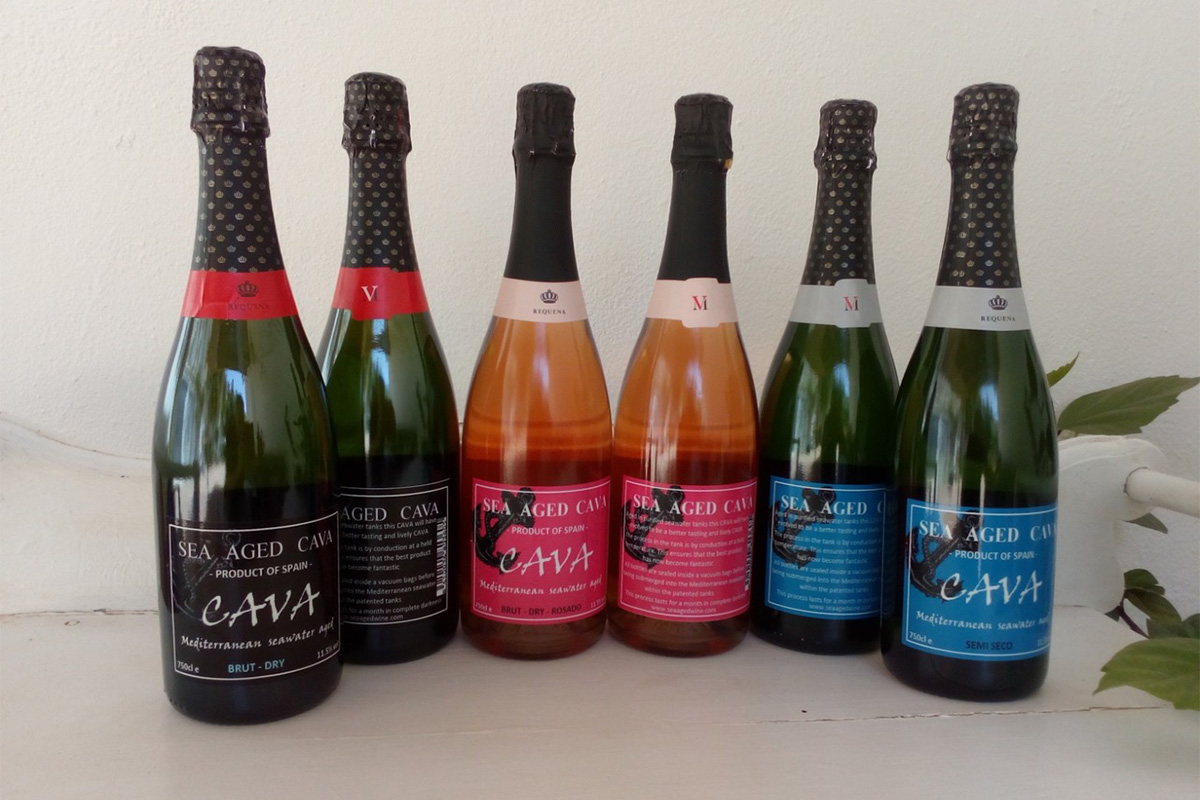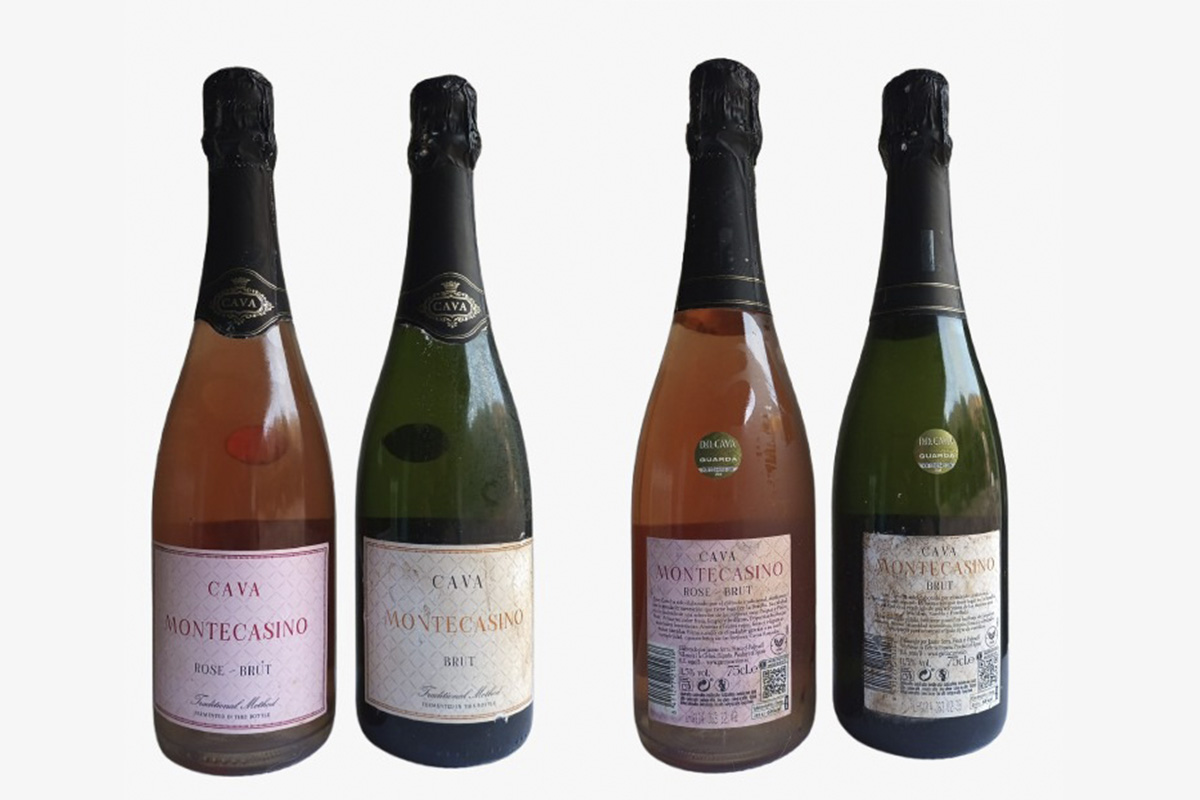23 diciembre, 2024

Colin Harkness
Well, it’s a little tenuous I admit, but I wanted to place Adele and Shakespeare in the same sentence whilst simultaneously having a link, no matter how obscure, to this month’s Wine Matters column.
So, how does it work, you may be asking? Well, I’m writing here about the concept, quite new, but old enough now to be established, of Sea Aged Cava. It’s a thing, but it’s also a website and I’m sure that by the end of this article you’ll be reaching for the computer to visit www.seaagedcava.com
Quite a few years ago now, 2010 in fact, some divers discovered a stash of Champagne in a shipwreck under the Baltic Sea* (first link!). I don’t recall the details now and anyway it doesn’t really matter as we’ve moved on so much since then. But the wine world was astounded to find that the Champagne in question was 170 years old and moreover, those bottles that hadn’t been damaged, either during the sinking or subsequently on the ocean bed, were home to some drinkable sparkling wine!
Why, was the question posed. Over the intervening years there has been much research completed which has led to the following conclusion. Ageing in sea water will not only maintain the wine’s quality but will actually improve it! Remarkable, don’t you agree?
The reasoning, after a lot of study and experiments, is as follows: 1. Under the water there is a constant beneficial temperature; 2. It’s dark down there, another advantage; 3. There is also a gentle rolling** motion which, rather like rocking the baby, is also appreciated. The wine industry took note and over a short time there were cages, crates and vats*** being deposited on the seabed off various countries’ coastlines – in secret of course, for obvious reasons!
I’ve been lucky enough to taste several such wines and it is true to say that the wines that have undergone this sea aging process are definitely good. However, until recently, it hasn’t been so easy to taste the same wine that hasn’t been thus processed against one that has. Enter Mr. Graham Smith, like ourselves an expat (from Britain) now living in Spain, who has given it some thought and come up with a working alternative.
But why is an alternative necessary, you may again ask, when it has been proven that it works already. Well, there are a number of problems with the theory, let alone the cost of such wines (one I tasted, for example, beautifully presented in a small barnacle encrusted 75 cl amphora, cost 150€!).

Firstly, let’s look at the temperature claim. Many readers will have enjoyed swimming in the Med, nothing like it is there? However, you’ll also know that there are often changes in temperature – sometimes a body of colder or warmer water envelopes us as the same currents responsible for the gentle rocking motion far below move slowly by. So, it’s thought that there isn’t, even at a greater depth, a constant temperature.
It’s dark, well that’s true for sure and there is still the gentle rolling. However, there are, of course, impurities floating in our seas (I won’t be specific!), bacteria which are unlikely to get into the bottles. But, is ‘unlikely’ enough?
Well, our mad inventor, Graham, and by the way this is how he introduced himself to me, had a lot to ponder. He researched, experimented, asked for permissions, consulted a patent attorney (that was easy – he can file his own!) and so on. Eventually Graham came up with a system, which eradicated all of the above potential problems, yet still produced improved cava and wine. As Max Boyce might have said – I know, ‘cos I’ve tasted it!
You see, Graham Smith has patented a system which allows for all the benefits of sea ageing wine – but on dry land! Yes, simple – but isn’t that the nature of all inventions? How does it work? Well, with permission from the local Mayor to take some of the Mediterranean; harmlessly purify it; place the sea water in large, sealed windowless tanks in a dark warehouse somewhere(!); and turn on the gentle pump simulating the movement felt under the sea; as well as ensuring that the temperature does, in fact, remain constant, Graham had the answer. All he needs to do is place the wine inside and in just a matter of bout two months the wine will have improved to the required standard, (another advantage here as it halves the time needed).
And that’s not all. Graham argues that this system is ecological and environmentally far better than placing huge crates on the seabed, home to all manner of life! So, everyone’s a winner – including the consumer.

Grahan is currently working with a large Spanish supermarket a deal hasn’t yet been reached (at the time of writing) but I’ve been able to taste one against the other, a sea aged cava, using Graham’s system versus the same cava bought from the shelves of said supermarket. My friends – it works, without question!
We tried Brut versions of white cava and rosado. Each had an improved presence, a greater depth and mouthfeel, more intense fruit (green apples for the white; soft red fruits for the rosé), a touch more complexity and a longer finish! I’m greatly looking forward to a sample of a famous Spanish red wine that has just been placed in the tanks as I’m told that a representative of a well-known Rioja producer had to admit that his wine was better after the treatment!
So how about the price? Well, sea aged wines are always going to be expensive because of the work that goes on behind the scenes. However, those aged using this brand new, patented system are a fraction of the price of the ‘traditional’ method of sea ageing. There’s a market for sea aged wines for sure (Graham is already selling in China for example) and the industry is making strides forward – this new invention is bound to be popular. Same result, far less expensive!
Space means that I can’t write of Graham’s other successful inventions – but why not go to www.seaagedcava.com; as well as www.eldiablo.es and see for yourself, learning also how you can become an agent with exclusive rights?
Se advierte al usuario del uso de cookies propias y de terceros de personalización y de análisis al navegar por esta página web para mejorar nuestros servicios y recopilar información estrictamente estadística de la navegación en nuestro sitio web.
17 comentarios en
This is amazing. I have drank this from this company.
I have even bought it as Christmas presents.
What a fantastic innovation. I only wish I had a bottle for Christmas!
J’ai eu la chance de goûter un Sea Aged Wine cet été en Espagne, et je dois dire que c’était une expérience absolument unique et fascinante. La différence entre le vin « classique » et celui vieilli dans des bassins d’eau de mer est flagrante et vraiment incroyable !
Ce qui m’a le plus marqué, c’est la douceur et l’harmonie des saveurs dans le vin vieilli. On ressent une complexité accrue, avec des arômes plus ronds et une texture soyeuse en bouche. C’est comme si ce processus sous-marin révélait une toute nouvelle dimension du vin, le rendant encore plus raffiné et agréable.
J’ai été impressionné par l’idée que des conditions contrôlées (obscurité, température constante, mouvement doux) peuvent transformer un bon vin en une véritable œuvre d’art pour les sens. Ce concept est non seulement innovant, mais il respecte également l’environnement, ce qui est un énorme avantage à mes yeux.
Je recommande à quiconque aime le vin ou est curieux d’expérimenter de nouvelles saveurs de découvrir cette merveille. Merci à l’équipe de Sea Aged Wine d’avoir rendu cela possible et de continuer à nous surprendre avec de telles innovations. Bravo pour votre travail exceptionnel !
Great article! I have actually personally – tasted Sea Aged Cava and you can really taste and notice the difference from a regular bottle of Cava, it completely changes the taste (in a good way) and in my opinion is a great conversation at a dinner party!
I’ve tried this and it really is such an incredible difference. It’s much smoother! I highly recommend it!
Interesting article. I actaully met that ‘mad’ inventor, lovely chap, while on holiday in Spain last year. He gifted us a bottle to have with our paella and it was delectable. It makes sense but actually trying it, I’m surprised this method isn’t used more often.
La Cava enviejecido por el proceso de imersion en agua de mar hace un cambio notable en el sabor de la Cava. Un sabor mas profundo y suave. Realmente merece la pena comprar un botella para probar y otra para regalar Este proceso Que cambia las caracteristicas de Cava y de botellas de vino de esta manera inovadora se tiene que experimentar. Felices fiestas!
It’s an amazing wine. It should be very happy and great thing to share with family to celebrate the christmas and new year season.
It is really amazing wine. It should be great to have it to celebrate the Christmas and New Year season.
I have seen this before Covid came, it was this company trying to get started.
They had tanks and the TV La Sexta news came to see them. You can see the news report on the website.
http://www.seaaged.com at bottom of first home page.
I bought it in a box from Casa Del Vino in Xabia/Javea Spain. The box had two bottles both looked the same but you could see that one has been in the sea water tank. Held at correct temperature etc…
I was not expecting it to be much different. How can you change a wine?
Got to admit. When you open them, you can smell the difference. The taste difference is remarkable.
I got to speak with the guy who invented the tanks. There is a science to it. He was not going to tell me. But I tell you this. Even this expert above Colin is telling you, try it. You will be hook line and sinker.
Glad to see this back in the news. It is probably the best-untold wine story ever.
It is http://www.seaaged.wine the website
I bought this for a friend of mine.
Like Colin who wrote this article, she is an expert. It was her birthday present, so I thought she is special so €39 on sea-aged Cava was not expensive. Normally sea-aged wines are astronomical.
The phone went the night of her birthday. Asking did I mean what I said in the note. «If you love this wine, I have to tell you I love you, call me».
It worked. That was in 2020 Covid times we have been together ever since.
And yes we still drink Sea-aged on special occasions. It is softer, smoother and more rounded.
Thats my turn of events. So I think the proposal will be with Sea Aged Wine. It is so so different.
There is science going on here. Just read that touching romantic comment. Lovely as that is, my husband should take note.!!
The science is conduction. The invention is the on land tank with motion and held temperature. Achieving this has been really clever.
To mimic the under water environment without harming it is another great big tick.
I am a lecturer, and will be using this example, as to how humans can actually live with nature.
Well done. I have no doubts the tank’s energy requirements are solar/renewable powered.
Jane. Surname was withheld as not to embarrass my unromantic husband.
How exciting for the industry. Interesting read too! I look forward to trying it.
I have tasted this Sea-Aged Cava, and several other sea-aged wines, and there is no doubt in my mind, that there is a marked difference between those, and the original (not sea-aged) versions of the same wines. The process would appear to improve many differing wines, to some degree. I look forward to trying some more.
Always had trouble drinking Cava BRUT.
I Tried this and I am converted. Like others have said. It is softer, smoother and rounded. That is the most descriptive words I have used for a wine…
I live in Hampshire UK and will be ordering this online.
I am surprised this is not in the press in the UK. Most of us holiday Brits love Cava.
Mandy Harris
Hampshire UK.
Just had a holiday in Javea, Spain. I am wondering if this wine is available in the UK.
I would like to have a franchise-type business if it is.
Can not believe how great it is. I am 100% sure this will sell so well. We have left clothes behind just to bring home more bottles.